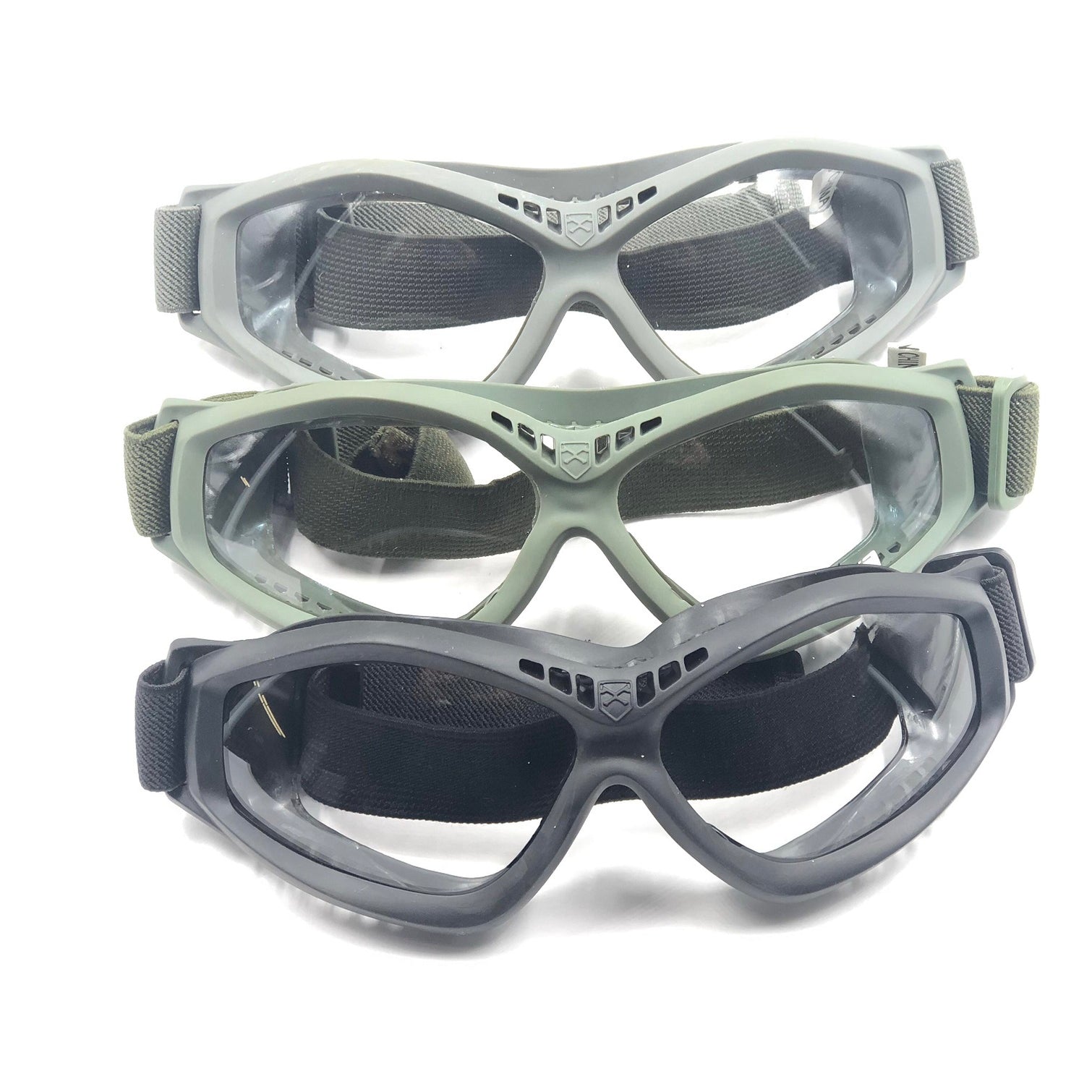

What are military goggles called?Īlthough they go by many names among the troops, the official designation is MCEP (Military Combat Eye Protection. They've been used by militaries at least back to World War I, but many civilians use them when training and practicing on the range. Since they're enclosed, they also provide a level of protection from dust and debris that can irritate eyes and make operating very difficult. Whether you’re looking for shooting eyewear for your weekend range days or tactical glasses for airsoft, training and everything in-between, check out our selection of MCEPS-compliant protective eyewear.Tactical goggles are a form of ballistic eyewear that protects against various fragments and small flying projectiles that could injure the eye.

And our Sharp Edge fits right in with anybody looking for an affordable pair of tactical sunglasses or reliable shooting eyewear. Our Overlord is an uncompromising, non-slip companion–and even comes available in kits with interchangeable lenses. The Hamel is a favorite among those looking for shooting glasses that comfortably go from the range to the river–and even come available with light shifting photochromic lenses. Our tactical eyewear lineup offers extreme ballistic protection, virtually indestructible frames, anti-scratch coatings, comfortable details and our semi-permanent anti-fog technology (Vapor Shield). All our tactical offerings are compliant with the latest MCEP standards and are designed with operator-focused features, uncompromising performance and comfort in mind. Additionally, optical clarity standards need to be satisfied to comply with MCEP’s current MILPRF32432 standards. However, our tactical glasses, compliant with the Military Combat Eye Protection (MCEP) classification, are designed to defend against impacts possible in combat or at the shooting range. Our safety glasses (compliant with ANSI’s Z87.1 standards) are designed to defend against impacts that may be experienced on a jobsite or while working at home.
#Tactical eye pro pro#
So, the difference between tactical eye pro and safety glasses lies primarily in its level of impact resistance. This eye pro is tested for compliance with the American National Standards Institute’s (ANSI) safety standards, but with impact velocities from a 22-caliber projectile traveling more than 660 feet per second. What are tactical glasses? And what’s the difference between this military-grade eyewear and safety glasses? Tactical, or ballistic, glasses are a form of protective eyewear rated to withstand impacts of extreme velocities. And some come available with interchangeable lenses, so you can more easily dial in your kit for the exact conditions. Plus, you can get tactical glasses at comparable prices as a quality pair of safety glasses. This is similar to ANSI safety glasses, but ballistic eyewear can withstand projectile impacts of much higher velocities. However, it’s better to choose eyewear that satisfies the Military Combat Eye Protection System’s (MCEPS) strict testing protocols. Some suggest an impact rating that at least meets ANSI’s Z87.1 standard (the rating for safety eyewear) for shooting glasses. For the indoor range, however, you’ll want a pair of impact-resistant eye pro with clear or Tiger’s Eye lenses–depending on the lighting conditions in the facility. But, when it’s time to hunker down and stay dry, sight in a new scope or train, what shooting glasses should you turn to? Outdoor tactical eye protection is fairly simple – toss on your pair of tinted ballistic glasses. If you’re like us, you’d rather plink outdoors than shoot at paper targets at an indoor range any day. In short, if you’re on a jobsite, wear safety glasses if you’re on the range or on patrol, wear tactical eyewear (although you could always wear MCEPS eyewear on a jobsite for extra protection). The Military Combat Eye Protection System (MCEPS) standard tests glasses with a 22-caliber projectile traveling at 660 feet per second, whereas the American National Standards Association’s (ANSI Z87.1 and Z87.1+) requirements are at much lower velocities. Tactical eyewear, on the other hand, is put to the test to promise impact protection against the most extreme projectile velocities. Safety glasses are tested to ensure they can protect your eyesight against hazards found on jobsites, warehouses, factories or other industrial environments. Safety glasses and tactical eyewear differ in their respective impact resistance. At the shooting range? You’ll definitely want some ballistic-rated eye pro. Sitting on the couch at home? No worries (although you may want some blue light-blocking glasses for your nightly scrolling).

The risks to eyesight vary in each environment.


 0 kommentar(er)
0 kommentar(er)
